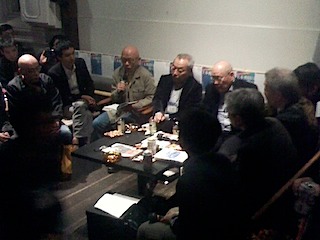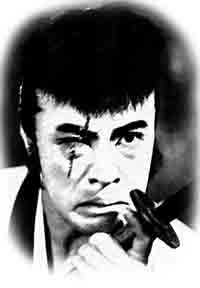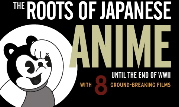This was my first visit to the YIDFF in six years. I used be a coordinator at the Festival (programming New Asian Currents), edited their journal Documentary Box, and did a ton of other jobs for them. Since moving to Yale, however, I've had to hold the fort (and take care of my son) while my wife, who was also a coordinator at the YIDFF, went to the festivals in 2005 and 2007. I actually had to take care of our progeny (some say the first child born of the Festival) the last time I went in 2003 as well, so this year was the first time I really had time to see a lot of films, even if I couldn't stay for the entire festival.
It was nice to see many familiar faces, but my impression - and that of others I talked to - was that this was not the good old YIDFF. In some ways, this is inevitable: the Festival, which had been fully funded by Yamagata City, now must find money on its own as an NPO, and this big change has been accompanied by transformations in programming and programmers. It seems to be relying more on events/screenings organized by outside organizations like J-Pitch, and trying to gear itself more towards the hometown crowd. These are not necessarily bad things. Some of the J-Pitch talks were interesting, and the Films about Yamagata section featured Honda Ishiro, the director of Godzilla who not only came from Yamagata, but also directed documentaries as well. (Yamagata has always challenged the boundaries between fiction and non-fiction, and thus screening a fantasy film like War of the Gargantuas
who not only came from Yamagata, but also directed documentaries as well. (Yamagata has always challenged the boundaries between fiction and non-fiction, and thus screening a fantasy film like War of the Gargantuas is not unusual.) The Directors Guild of Japan also sponsored an award for the first time (and gave me the chance to talk to Negishi Kichitaro and Kaneko Shusuke for the first time).
is not unusual.) The Directors Guild of Japan also sponsored an award for the first time (and gave me the chance to talk to Negishi Kichitaro and Kaneko Shusuke for the first time).
But in general it seemed that the level of programming was not up to the usual YIDFF level. The film that won the top award, Encirclement, may have been on an important topic (neo-liberalism), but it did not challenge the art of documentary in the way many previous films did (unless you call a wall-to-wall interview documentary that would be no different as a written essay a challenge to the existence of documentary). Japan - A Story of Love and Hate, which won two awards and was a crowd favorite because it was filmed in Yamagata, was to me just another case of foreign stereotyping of Japan: a consternated British director, complaining at the beginning that Japanese are too unfriendly and won't open up to him, finally finds someone (named Naoki) who will tell him what he wants to hear and mistakes that for the truth about Japan. The relationship between Naoki and his girlfriend can be compelling, but the director, Sean McAllister, never questions his own approach to Japan. The producer of that film, NHK's Kotani Ryota, who gave an information-filled J-Pitch talk, still praised this film for its understanding of Japan, but I'm afraid that showed just how much NHK sees itself as either facilitating foreign confirmation of the Japanese nation or, as with the Asian films they produce, enabling Japan to be the parental facilitator of Asian directors discovering a true Asian spirit unsullied by the West (which is an example of the imperialism of multiculturalism roundly criticized by Koichi Iwabuchi and others).
and others).
I didn't encounter a new Japanese film that really bowled me over, even though there were a number I missed. Works such as Nagai Park Elegy, The Memory of Being Here, and Memory of Spider and Moth were definitely promising, but I felt the filmmakers still had to think more about their stance towards filmmaking and how to present that in their work. While I was glad to see Takamine Go's Puppet Shaman Star, since I wrote about him in Censoring History , the Islands program did not show the impact of previous YIDFF sidebars.
, the Islands program did not show the impact of previous YIDFF sidebars.
Actually, the best "Japanese" works tended to be older ones, such as Memories of Agano, the opening film dedicated to its deceased director, Sato Makoto; and the Natco films shown as part of the Films about Yamagata section. The latter featured "educational" films made by the Civil Information and Education Section (CIE) of GHQ that were sent around Japan during the Occupation and shown on Natco projectors. It was great to learn "Discussion Techniques," especially since CIE's authoritarian sense of discussion (all groups must have a discussion leader or they will turn into a violent mob!) seemed to mirror both GHQ policy and the documentary form ruled by an omniscient, third-person narrator.
Finally, the best event was not even an official one: the talk (photo below) about Tsuchimoto Noriaki that was held on Monday night at Komian, the old warehouse that functions as the social spot each night at the YIDFF. Yamane Sadao, Ueno Koshi, Suzuki Hitoshi, Suwa Nobuhiro, Ishizaka Kenji, Nakamura Hideyuki, and Fujii Jinshi had a largely productive, if somewhat overly academic discussion (there were some complaints concerning that) about the great documentarist's focus on labor and the body, the road and the dissolution of the boundaries between art and reality, and a fluid and mobile textuality that intimately involved a known audience.
It was great being at Yamagata again. I just hope the Festival eventually rebuilds itself at the end of its great transformation.




